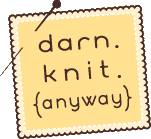
DKA Shop Window 2015
We’ve got this great big blanket in our front window. It gets quite a bit of attention. It is pretty cool. Super big stitches are trendy and it is so soft! And it’s all over the internet right now. Pinterest, Facebook, Instagram, everyone is sharing images of a blanket like this. Trust us…don’t knit it.

@anna.mo.ohhio
She looks so happy because she knows she spent a ton of money on a blanket that will look this great for about 6 minutes:)
There is no denying that these blankets look terrific in the photos and probably for a day or two. If you want to hang this blanket on your wall, or over a chair you never use, go for it. If you actually want to use it as a blanket, be prepared. Prepared for fuzz everywhere, prepared that the “yarn” might come apart if you snag it on something. Do you have a pet that loves to play with yarn you bring home? Well, this roving will be no different. And how will you clean it? Remember, this roving is used for felting too, so any agitation with heat and water may felt the fibers. The online source for the blanket tells you to bring it to the dry cleaner. I can’t imagine a dry cleaner agreeing to clean this blanket.
This blanket is knit out of roving (technically combed top), not yarn!
Roving is wool that has not yet been spun into yarn. We sell roving to people who spin yarn and people who needle or wet felt. Or to people who want to make cute slippers like these:)

Cadeautje Slippers @ysolda
Wool roving or combed top, is the fiber sheered from a sheep and then processed. The processing, very simply put, cleans the fiber (gets rid of hay and other organic materials) and then it is processed in one of two ways. Roving is processed by carding, which aligns the strands in different directions to prepare it for spinning. Combed top is processed by combing until the strands are parallel.
If yarn is the goal then the roving or combed top is spun into a single strand of fiber, a single ply. It more often is then spun again with more strands of fiber to make plied yarns that you buy in our shop. Yarn is more durable, less sheddy and pilly than roving.
The wool recommended online for this blanket is merino wool combed top. Merino sheep are super soft! They have strands of wool that are on average only 3″ long. So roving that you would make for this blanket are made up of millions of 3″ long strands. Remember, these strands are simply held together with the oils from processing and the natural scales on each individual fiber.
Again, this blanket is knit out of roving (combed top), not yarn!
Whether roving or combed top are used, it will look good for a short while and then odds are it will be come a pilly, sheddy, dirty mess in no time.
Ahhhhhh! We hate to be downers, but don’t knit this blanket. Save your money.

I agree with all but one of your points. Roving is not combed until the fibers are parallel. In roving, the fibers are carded willy nilly. Combed top has all of its fibers aligned, because it is combed to preserve the direction of the fibers. I know lots of places use the terms interchangeably, but they are actually different preps, for different methods of spinning.
I’ve been waiting for someone to say this! The cost of the yarn is unbelievable, and the roving is nothing I would want to use for such a big project.
Yes, it is pretty cool, but “reality bites!”
I love how honest you are!! Thanks.
Thanks for a great explanation! I always they wouldn’t be the most practical, and probably weigh more than you think they would.
Thanks for a great explanation! I always thought they wouldn’t be the most practical, and probably weigh more than you think they would.
Doesn’t anyone make a giant plied?
I love your honesty, but also all of the great information behind your advice. Thanks!
I was trying to oversimplify! I’ve updated the blog to be a little clearer…just wanted to get the point across:) Thanks for reading!
You could easily knit this with a few strands of a plied bulky but it wouldn’t have the same fluffy look. No one has really come out with the perfect alternative. BAH!
THANK YOU for posting this! I shudder to think of how much roving would be sacrificed for this misleading fad.
Back to the question about a giant plied. I knew the minute I saw this it wouldn’t hold – that was a given. But not by putting together several strands, is there any way to actually spin a giant plied yard? I was curious about that myself. I’ve seen tutorials on spinning yard on a pencil. What if it was done on a large post, dowel or somehow else where the dowel was secured so you didn’t actually have to hold it – in some sort of machine. Would that work? Thanks very much and thank you for writing this article. I’m sending it to my niece who’s dying to knit one of these! I kind of doubt she was looking for the 6 minute million dollar blanket!
I’ll ask my spinning pals and see what they have to say;)